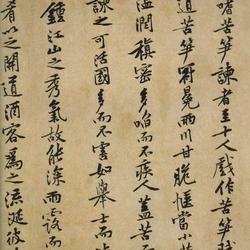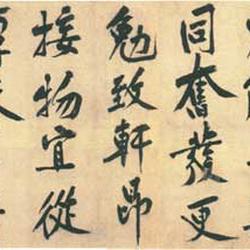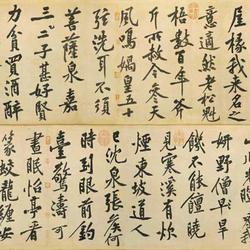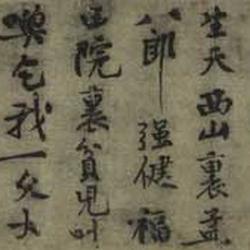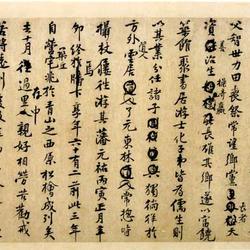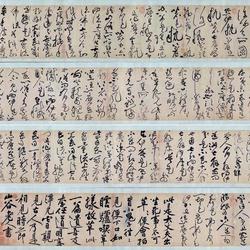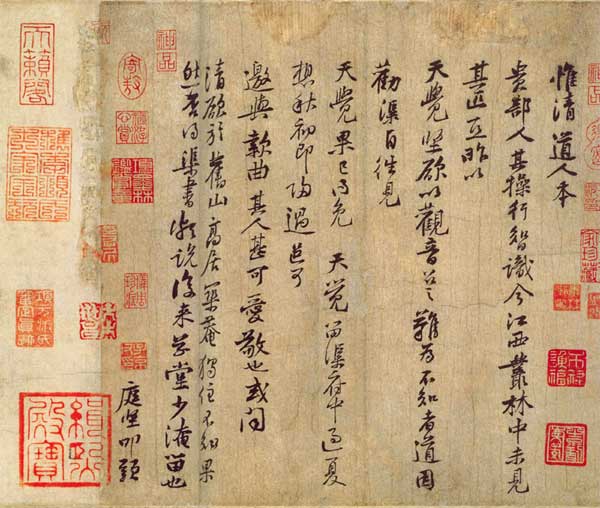
Huang Tingjian's "Wei Qing Dao Ren Tie" running script, paper. Length 29.3cm, width 31.8cm Collection of the Palace Museum, Beijing
Explanation:
However, the people of Qing Dynasty were originally from a noble tribe, and their conduct and knowledge were unparalleled in the jungles of Jiangxi today. Yesterday, Tianjue wanted to call him with Guanyin, but it was difficult for those who didn't know how to do it. He persuaded him to go see Tianjue himself, but he was saved. Tianjue stayed in his house to spend the summer. I think I will return to the city in the early autumn, and I can invite him to greet me. He is a very lovely and respectful person. Or maybe I want to live alone in a hermitage high up in the old mountains. I wonder if that’s true? It was said in Qu's book that Shaoyan stayed in the thatched cottage later. Ting Jian kowtowed.
There are 22 seals in the collection, including "Ji Xi Palace Treasure", Xiang Yuan Bian Seals, "Yi Zhou Collection", etc., and 5 half seals.
In "Weiqing Taoist Tie", the author records the conduct and character of Weiqing Taoist and his interactions with Zhang Shangying (Tianjue). Huang Tingjian was in Fenning, Jiangxi Province in the first year of Shaosheng's reign (1094) in the Northern Song Dynasty. According to the analysis of the post, this post was written in the summer of that year, when he was 51 years old. The Qing Taoist mentioned in the post is recorded in Volume 6 of "Jia Tai Lu". His common surname is Chen. He was from Wuning, Nanzhou (in Jiangxi). He was a Zen master of Huanglong Temple in Longxing Prefecture, Jiangxi Province. He lived in the seventh year of Zhenghe in the Northern Song Dynasty (1117). Year) died.
The lines of this calligraphy are wide and the words are close, so the strokes are mostly horizontal, with the structure sideways, low on the left and high on the right, with a steep attitude, which fully reflects the characteristics of Huang Tingjian's small running script and is his representative work.
This post is an old collection of the Qing Dynasty and is included in the "Dharma Book Grand View Book". Emperor Qianlong inscribed a poem in praise of "Lingdong Lao Gan Yan Jian Yan Gu" (can be found in Volume 13 of "Sanxitang Fa Tie"). Later, the ink mark of this praise and the seal of the Qing Dynasty were dug up.
It is recorded in the fourth volume of "Ni Gu Lu", the second volume of "The Spectacular Life", and the Dharma book volume of "Mo Yuan Hui Guan".

